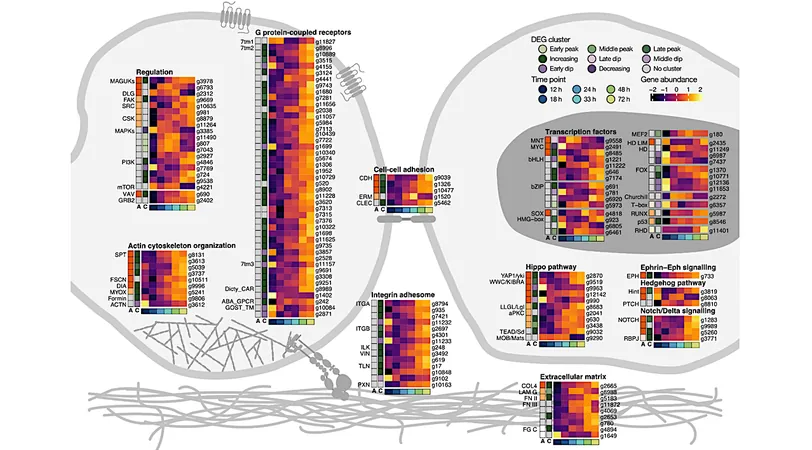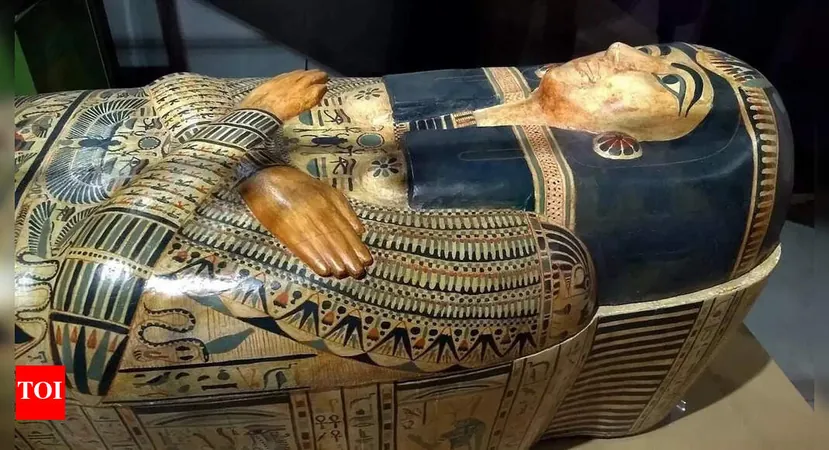
How a Tiny Relative of Animals Unlocked the Secrets of Multicellularity
2025-05-22
Author: Arjun
The Mystery of Animal Evolution Unraveled
Have you ever wondered how animals transitioned from simple unicellular ancestors to the complex multicellular beings we see today? This age-old question has puzzled scientists for generations, but new findings shed light on a fascinating piece of the puzzle.
Aggregation: The Overlooked Pathway
Traditionally, scientists dismissed the idea that aggregation—where cells group together—was instrumental in developing complex multicellularity. However, recent studies involving various unicellular relatives of animals, like the intriguing choanoflagellates and filastereans, reveal that this behavior might be more significant than previously thought.
A Groundbreaking Discovery with Ministeria vibrans
Introducing Ministeria vibrans, a little-known marine filasterean. Researchers have shown that it can form stable multicellular aggregates when cultured with a specific bacterium. This unexpected behavior suggests that aggregation, which we often overlook, might actually date back to the very origins of multicellular life!
Genes at Play: The Blueprint for Multicellularity
In their groundbreaking research, scientists discovered that during the aggregation of M. vibrans, many genes associated with animal multicellularity—like those governing cell adhesion, signaling, and gene regulation—were actively expressed. This indicates that our unicellular ancestors may have possessed the necessary genetic toolkit to transition to multicellularity!
Implications for Our Understanding of Evolution
What does this mean for the evolutionary narrative? It suggests that key factors driving this major shift involved not just survival strategies like improved feeding—but also the potential for sexual reproduction, hinting at a dynamic interplay that shaped the dawn of animal life.
Visualizing the Evolutionary Journey
Illustrations depicting the phylogeny of these fascinating organisms show that the aggregation abilities seen in M. vibrans and its relatives might reflect ancestral traits retained through evolution, transforming our understanding of how complex life emerged.
The Future is Bright in Evolutionary Research
As researchers continue to unravel the threads of multicellular origins, the implications for bioengineering, medicine, and our understanding of life's complexity could be profound. This close unicellular relative not only reveals secrets about our own existence but also opens exciting avenues for future discoveries in the vast narrative of evolution.



 Brasil (PT)
Brasil (PT)
 Canada (EN)
Canada (EN)
 Chile (ES)
Chile (ES)
 Česko (CS)
Česko (CS)
 대한민국 (KO)
대한민국 (KO)
 España (ES)
España (ES)
 France (FR)
France (FR)
 Hong Kong (EN)
Hong Kong (EN)
 Italia (IT)
Italia (IT)
 日本 (JA)
日本 (JA)
 Magyarország (HU)
Magyarország (HU)
 Norge (NO)
Norge (NO)
 Polska (PL)
Polska (PL)
 Schweiz (DE)
Schweiz (DE)
 Singapore (EN)
Singapore (EN)
 Sverige (SV)
Sverige (SV)
 Suomi (FI)
Suomi (FI)
 Türkiye (TR)
Türkiye (TR)
 الإمارات العربية المتحدة (AR)
الإمارات العربية المتحدة (AR)